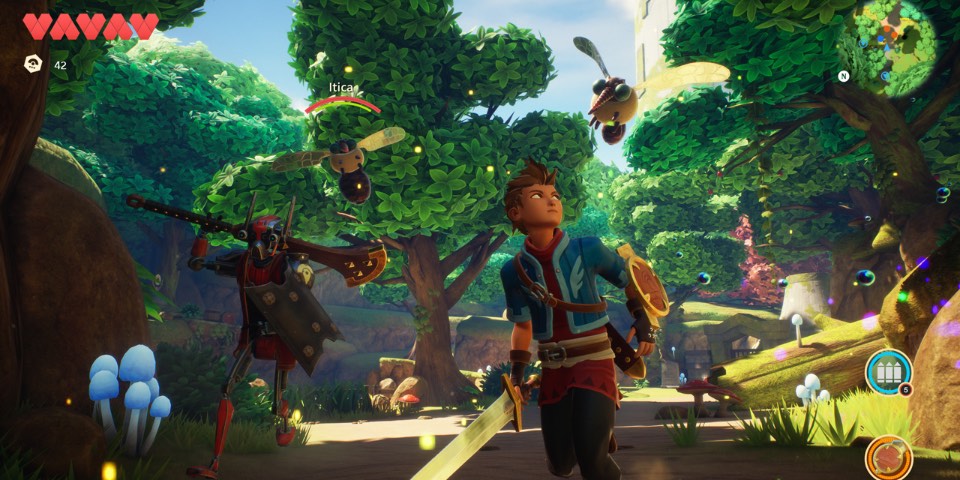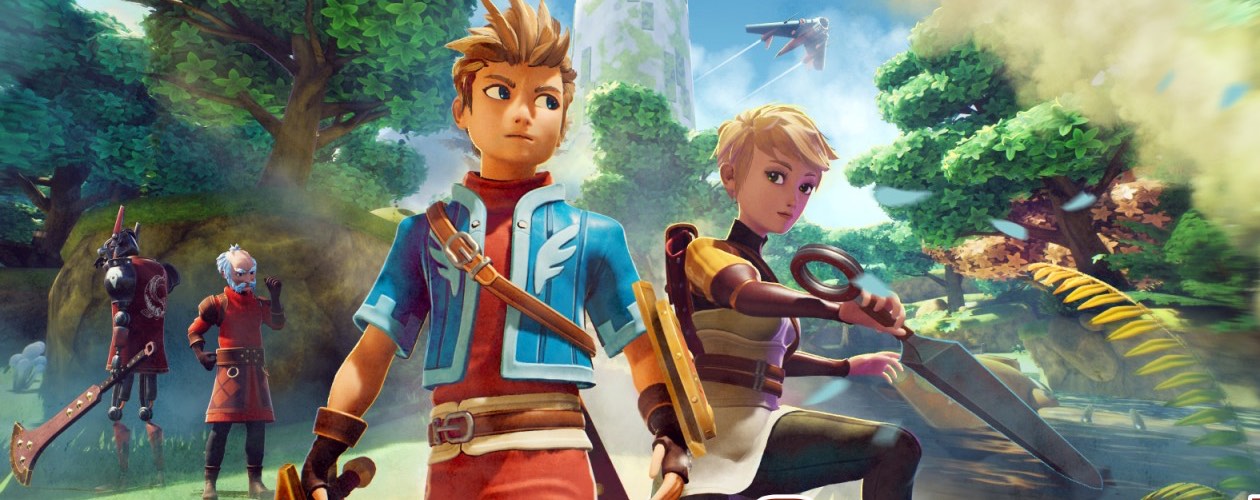Having been one of the highest profile titles on Apple Arcade, Oceanhorn 2 has been around for a little while now, but it’s apt that it’s now out on Nintendo Switch. This is, after all, a series that takes clear influence (to put it generously) from the Legend of Zelda series.
The first Oceanhorn was a bit of a sleeper hit, taking aspects of Zelda and applying it to a well designed isometric flooded world. Knights of the Lost Realm is billed clearly as Oceanhorn 2 but is in fact a prequel, and one that takes place a thousand years before the events of the first game. This complete disregard for the logic and chronology of reality is not entirely new in games, but this is perhaps the most blatant example in a while. Still, how does the Zelda-alike fare on the home of its illustrious inspiration?
First up, Oceanhorn is a lovely looking game, and one that feels like a tribute to both Wind Waker and Skyward Sword. The bright and colourful environments are impressively detailed with a surprisingly long draw distance and relatively little pop-in. Admittedly I was playing on a Switch Lite so it is possible that these may be more noticeable on the big screen, but the visual design really nails the Zelda vibe. In this, as with so many other aspects, though, the line between tribute and outright copy is a fine one indeed.
The storyline of Knights of the Lost Realm is standard Zelda fare. Your Hero, an unnamed Link cosplayer, must work alongside champions from other areas of Gaia to return three Emblems to their rightful locations and power the Great Core beneath the capital city. To be honest, this plot is mostly irrelevant and just serves to link (ha) your journey together.
As with Zelda, the overall battle against a big bad is delayed by a series of glorified fetch quests that take you through various dungeons, each containing an essential item or power-up. In this sense, Oceanhorn 2 is arguably a truer sequel to the series than the open world Breath of the Wild. The supporting characters are fine, with perfectly adequate voice acting, but are certainly not as memorable as genre highlights like Xenoblade Chronicles.

At first you’ll be equipped with nothing but your trusty sword, but this is soon joined by a shield and the versatile Caster gun, which acts as both ranged weapon and elemental magic purveyor. You’ll also unlock bombs and a hookshot as you progress, and start putting it all to use for solving puzzles with switches, lever and buttons. The Caster gun leads to some of the game’s more involved puzzles, with some memorable electricity and ice related head-scratchers. Again, this all reads like I’m describing a classic Zelda adventure, because that is exactly how it feels.
The environments are clearly and easy to navigate, with only a few roadblocks where I couldn’t make out what I needed to do (some of these were admittedly due to forgetting basic elemental properties). That isn’t to say that Oceanhorn 2 is an easy game though, as there are a few quite fiendish moments that really force you to make full use of your equipment.

Combat is pretty frequent and is mostly fairly straightforward. You can start off by shooting from afar, quickly zoom to your enemies using your hookshot, and then pull out your sword and shield for good old-school action RPG battling. The lack of a lock-on feature is a bit annoying, but something I quickly got used to. A little more of an issue is that you have to map your shield to the same face button as your items, which makes for some fiddly moments. This makes cool combinations of items unwieldy and results in you relying on prod and roll techniques for the most part. The Caster gun’s elemental spells are always available, however, and freezing or burning your enemies is a great way to give yourself an edge.
Boss battles are present and correct, mostly taking the form of mobile environmental puzzles rather than twitchy combat encounters, which leads to some lengthy sections of doing no damage until you work out the enemy’s weak spot. These aren’t always that obvious (until they’ve been exposed), which is a refreshing change of pace to most video games. Unfortunately, the less memorable bosses were the two final ones, which undermined the narrative climax of the game. Given its role as a prequel, it’ll come as no surprise to hear that the ending is inconclusive, although it has been modified since the original Apple Arcade release.


ico
I’m a massive tightwad when it comes to download games (rarely shelling out) and Oceanhorn has had my thumb hovering over the buy button many a time over the last few years but I’ve not succumbed yet. As the review indicates even a Zelda clone / homage / rip off is probably preferable to no Zelda-alike at all. Think I may have to dive in to the original especially if it’s now on cheap due to this release and then I can buy this one in about 5 years!